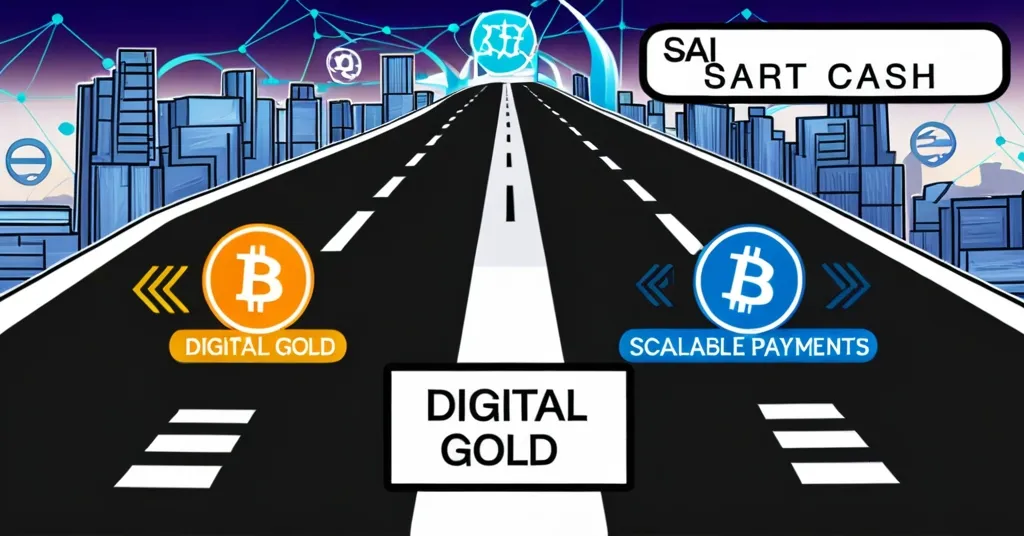Bitcoin Cash: Staying True to Payments, Readies for 2025 Smart Contract Upgrade

Bitcoin Cash: The Path Less Traveled, But True to Its Roots
Bitcoin Cash (BCH) remains resolute in its mission to serve as a scalable, low-cost payment solution, distinguishing itself from Bitcoin’s (BTC) evolving identity as a digital store of value. A new resource crafted by BCH community member “minisatoshi” offers an illuminating glimpse into BCH’s history and upgrades, providing a stark comparison with Bitcoin and reigniting the debate about Bitcoin’s original purpose.
- Minisatoshi has unveiled a comprehensive history and upgrade timeline for Bitcoin Cash.
- This resource includes a BTC fork map for historical comparison.
- Criticism is directed at figures like Michael Saylor for viewing Bitcoin as digital property rather than a currency.
- Bitcoin Cash emphasizes being permissionless cash with low fees, aligning with Satoshi Nakamoto’s vision.
- An upcoming May 2025 upgrade will enhance BCH’s smart contract capabilities.
BCH vs BTC: The Divergence
Minisatoshi’s release highlights the ideological and functional splits that defined the paths of BCH and BTC. Bitcoin Cash, created from a hard fork of Bitcoin in 2017, sought to address scalability concerns by increasing block size to 32MB, contrasting with Bitcoin’s adoption of Segregated Witness (SegWit) to improve transaction processing. This divide underscores the philosophical rift over Bitcoin’s purpose.
Despite Bitcoin’s positioning as a store of value or “digital gold,” BCH maintains its dedication to low-cost, permissionless transactions, echoing the original vision of Satoshi Nakamoto. This vision, many argue, has been overshadowed by the narrative promoted by influential figures like Michael Saylor, CEO of MicroStrategy, who view Bitcoin primarily as a digital property asset. Michael Saylor’s perspective often contrasts with BCH’s approach.
“It’s always been about payments, whether one likes it or not.”
Upcoming BCH Upgrades
Minisatoshi’s contribution gains significance as BCH prepares for a May 2025 upgrade, which will amplify its smart contract capabilities. Smart contracts are self-executing contracts with the agreement terms coded into them. The planned enhancements, including “VM Limits” and “BigInts,” could increase BCH’s appeal to developers by expanding its functionality.
Despite BCH’s focus on scalability, its adoption lags behind Bitcoin. The larger block sizes theoretically allow faster transactions, but BCH grapples with challenges like a smaller network, lower trading volumes, and reduced security and liquidity compared to Bitcoin. This tension between technological promise and real-world adoption is a notable aspect of BCH’s journey.
The BCH community remains hopeful that the upcoming upgrades will strengthen its position in the crypto landscape, potentially reshaping perceptions and usage patterns.
Key Takeaways
What is minisatoshi’s contribution to the BCH community?
Minisatoshi has released a detailed trajectory and upgrade history of Bitcoin Cash, including a comparison with Bitcoin.
What is Bitcoin’s primary purpose?
Bitcoin’s primary purpose was always about payments, in line with Satoshi Nakamoto’s original vision. However, differing views exist.
Who is criticized and why?
Some criticize Michael Saylor and similar figures for promoting Bitcoin as merely digital property, diverging from its intended use as currency.
What upcoming changes are mentioned for Bitcoin Cash?
A May 2025 upgrade for BCH, which will enhance smart contract capabilities with “VM Limits” and “BigInts” changes.
Amidst the ongoing dialogue on Bitcoin’s identity, minisatoshi’s mapping of Bitcoin Cash’s trajectory serves as a reminder of the original intentions that underpin cryptocurrency’s inception. As the debate continues, the crypto community watches with keen interest to see how BCH’s future developments will influence its adoption and functionality.



